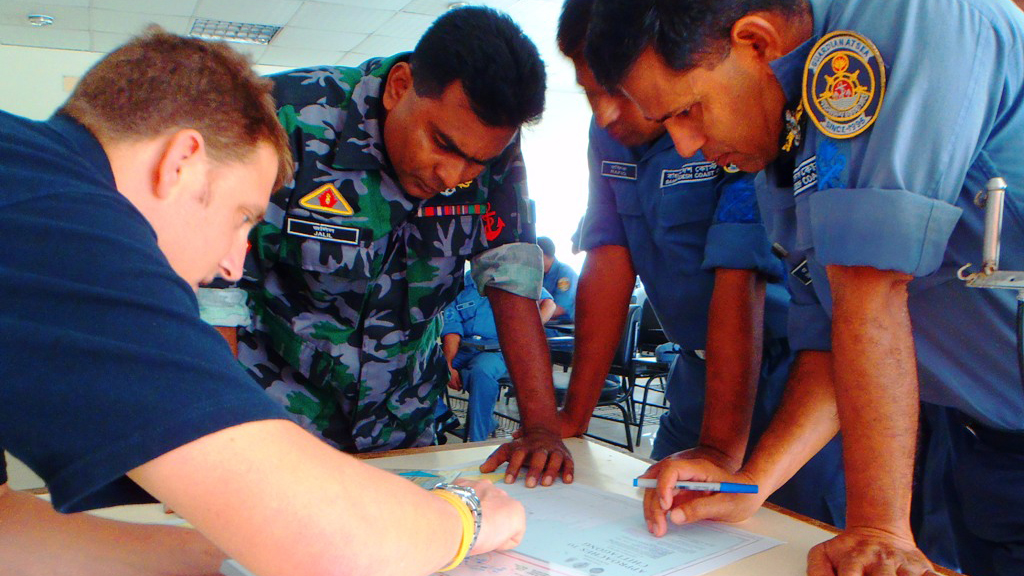Drowning reduction in fishing communities
Method
Individuals and families living and working in fishing communities are at high risk of drowning due to their increased exposure to water. Many fishers rely on the income made from their catch to support an entire household. This leads to their involvement in dangerous fishing practices, such fishing in bad weather or in unsafe waterbodies, using unsafe fishing vessels, not having appropriate safety equipment accessible, and allowing fishing vessels to be operated by untrained or fatigued staff. These high-risk practices are particularly prevalent in low-income countries and rural/remote areas, where water vessel and water safety regulations may not be effectively enforced.
The children of fishers who live in close proximity to water are also at high risk of drowning as they may be left unsupervised for extended periods of time while their carers are fishing. Therefore, drowning reduction programs must target both adults and children simultaneously in order to effectively prevent drowning in this context.
Reducing drowning among fishers
- Educate individuals on the risks and hazards of water, enabling them to identify and avoid dangerous weather conditions and unsafe waterbodies
- Encourage large commercial fishing boats adhere to safety regulations, protecting the occupants on board and ensuring smaller private boats are not endangered
- Encourage boat occupants adhere to safety regulations such as wearing life jackets and not exceeding maximum occupancy
- Provide fishers with CPR and rescue skills to enable them to act effectively in an emergency
- Improve swimming skills and water safety skills so that individuals can stay afloat if they fall overboard or are swept off the shore
- Ensure hazardous and shallow waterways are clearly marked Avoid consumption of alcohol and other drugs when fishing or on the water
Reducing drowning in children and infants
- Provide good adult supervision around the home and in day care. Carer education may be required to establish the elements of good supervision.
- Reduce exposure to water through the use of barriers
- Educate older children on the hazards of water, water rescue and CPR
- Improve swimming survival skills so that children can remain afloat should they enter the water
- Remove potential hazards such as nets and lines near the water’s edge
Advantages
- There are a number of approaches for preventing drowning developed for the general population which could be effectively implemented in fishing communities.
- Many are cost-effective and simple.
- Many can to be implemented within communities without external resources or support.
Disadvantages
- Some interventions are costly and these costs may be borne by individuals, such as purchasing lifejackets or refurbishing fishing vessels.
- Some interventions are complex and require significant infrastructure to run, such as enforcing commercial boating regulations.
- Fishers may be resistant due to associated time requirements and changes to the way they work.
- May impact on how effectively fishers are able to generate income and support their families.
Context
Due to their heightened water exposure, it may be appropriate to first identify and target fishing communities when implementing drowning reduction strategies in an area. Be prepared to think and work towards creative solutions as the context of fishing communities is different to that of the general population. To enhance the likelihood of the adoption of potential drowning prevention strategies, it is critical to involve the fishing community from the earliest stages of project development.
Examples
Early warning system for fishermen
Overview of drowning among fishermen and guide on fishing vessel risk assessment (PDF 687KB)
High risk practices among fisherman (Greece): Frantzeskou, Elpida, et al. "Risk factors for fishermen’s health and safety in Greece." International maritime health 63.3 (2012): 155-161.
More information
Safety resources for commercial fishing
Fishermen’s perceptions of risk (PDF 351KB)
Measuring and improving safety for recreational boating: Amanpreet Virk and Terri Pikora, Developing a tool to measure safe recreational boating practice. Accident Analysis and Prevention 43(1):447-500 2001
Step 5
Set objectives and interventions
